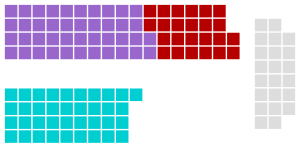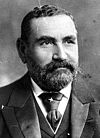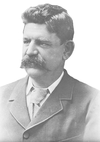New South Wales colonial election, 1901
|
|
|||||||||||||||||||||||||||||||||||||||||
|---|---|---|---|---|---|---|---|---|---|---|---|---|---|---|---|---|---|---|---|---|---|---|---|---|---|---|---|---|---|---|---|---|---|---|---|---|---|---|---|---|---|
|
|||||||||||||||||||||||||||||||||||||||||
|
All 125 seats in the New South Wales Legislative Assembly 63 Assembly seats were needed for a majority |
|||||||||||||||||||||||||||||||||||||||||
|
|||||||||||||||||||||||||||||||||||||||||

Legislative Assembly after the election
|
|||||||||||||||||||||||||||||||||||||||||
|
|||||||||||||||||||||||||||||||||||||||||
The 1901 New South Wales state election was held on 3 July 1901 for all of the 125 seats in the 19th New South Wales Legislative Assembly and it was conducted in single-member constituencies with a first past the post voting system. Suffrage was limited to adult white males. The 19th parliament of New South Wales was dissolved on 11 June 1901 by the Governor, Lord Beauchamp, on the advice of the Premier, John See.
Federation had seen a re-evaluation of priorities among the main political parties in New South Wales, with the Protectionist Party and the Free Trade Party becoming the Progressive Party and the Liberal Reform Party respectively.
New South Wales state election, 3 July 1901
Legislative Assembly
<< 1898 — 1904 >>
...
Wikipedia



